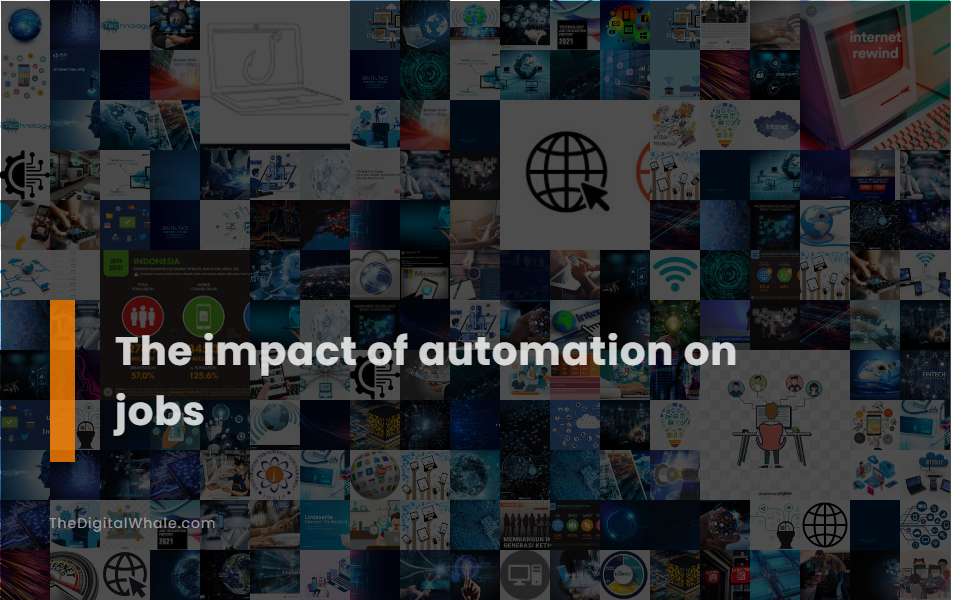The Impact of Automation On Jobs
What are the effects of technology on jobs? What effects will automation have on the labor market? Let's find out more about The Impact of Automation On Jobs.

300 million jobs could be lost to AI by the end of the decade.
By 2030, an estimated 300 million jobs worldwide could be lost to AI, representing about 9.1% of all jobs globally, with significant impacts expected in professions vulnerable to automation such as writing, photography, and software development. This disruption is part of a broader trend where AI could automate up to 30% of jobs, particularly affecting tasks that are highly structured and language-oriented.
44% of companies using or planning to use AI believe it will result in layoffs in 2024.
In 2024, a substantial 44% of companies utilizing or intending to adopt AI technologies anticipate that it will lead to layoffs. Many of these firms expect job reductions of 5% or greater, especially in fields prone to automation, including data entry, administrative positions, and accounting. The rise of AI in the workplace signals a pivotal shift, underscoring the importance of adapting to the evolving professional landscape. For further insights into how these changes might unfold, explore the comprehensive analysis available at AI Replacing Jobs.
By 2030, 14% of the global workforce (375 million workers) will have been forced to change their career due to AI.
By 2030, approximately 14% of the global workforce, which is around 375 million workers, may need to change their occupational categories due to the disruptions caused by digitization, automation, and AI advancements. According to Thomasnet Insights, these technological shifts are expected to create a significant impact, requiring workers to adapt to new roles and industries to remain relevant in the rapidly evolving job market. As economies transform, the workforce must prepare for emerging opportunities and redefined skills, ensuring a seamless transition to future employment landscape.
60% of jobs in advanced economies are at risk of being replaced by AI, compared to 26% in low-income countries.
In Advanced Economies, approximately 60% of jobs are at risk of being impacted by AI, with half of these jobs potentially benefiting from AI integration and the other half facing the risk of reduced labor demand or job displacement. In contrast, only about 26% of jobs in low-income countries are exposed to AI, reflecting the differing levels of automation and technological adoption across these economies. As we navigate this transformative period, it's crucial to ensure that the developments in AI benefit humanity. The [International Monetary Fund](https://www.imf.org/en/Blogs/Articles/2024/01/14/ai-will-transform-the-global-economy-lets-make-sure-it-benefits-humanity) discusses strategies to address these disparities, emphasizing the importance of policy choices that can help mitigate the risks while maximizing the benefits globally.
Since 2000, automation has resulted in 1.7 million manufacturing jobs being lost.
Since 2000, automation has resulted in the loss of 1.7 million manufacturing jobs worldwide, with significant job displacements observed in regions such as the US, the European Union, China, and South Korea, where each industrial robot has displaced an average of 1.6 workers. For more insights and detailed statistics on the impact of automation on employment, visit the Leftronic Blog.
Related:
What are some of the benefits of using digital HR tools? What are some of the benefits of data literacy in the modern workplace? Let's find out more about The Role of Data In the Modern Workplace.
24% of all workers are worried that AI will soon make their job obsolete.
As the impact of artificial intelligence continues to grow across industries, a significant 24% of all workers express concern that AI will soon render their jobs obsolete. This worry is not uniform across age groups, as younger workers aged 18-24 demonstrate a notably higher level of apprehension, being 129% more likely to worry about the prospects of their employment compared to their older counterparts. To explore the implications of AI on future employment trends, you can delve deeper into this topic by visiting the insights provided on Exploding Topics. This issue underscores the need for adaptation and proactive strategies in workforce development to mitigate the challenges posed by automation and AI advancement.
Workers aged 18-24 are 129% more likely than those over 65 to worry about AI making their job obsolete.
Workers aged 18-24 are significantly more likely than those over 65 to worry about AI making their job obsolete. This apprehension reflects their extended career span and the accelerating development of AI tools, which could present a considerable challenge to their future employment. As AI Reshapes the Workplace, younger employees express a heightened concern about skill obsolescence within the next few years, as these technological advancements demand continual adaptation and learning. The evolving landscape calls for a strategic focus on developing new competencies to remain competitive in a technology-driven work environment.
By 2025, two million workers in manufacturing could be replaced by automated tools.
By 2025, automation is anticipated to disrupt 85 million jobs globally, with significant impacts in sectors like manufacturing. However, this technological advancement is expected to foster the creation of approximately 97 million new roles, particularly in fields such as robot maintenance, data analysis, and AI development. For detailed insights into how these shifts are reshaping our future workforce, the World Economic Forum offers an in-depth report. Rather than replacing workers, these innovations will redefine employment landscapes, opening up opportunities for new career paths.
Up to 20 million manufacturing jobs are at risk due to automation by 2030.
By 2030, automation is predicted to displace up to 20 million manufacturing jobs globally, making the manufacturing sector 8.5% smaller than it would be without robotic advancements. This significant shift will have the greatest impact in lower-income areas and traditional labor-intensive industrial bases. For more details, you can read about how robots are transforming the manufacturing industry on IndustryWeek.
Automation could lead to the displacement of 15% of the global workforce (400 million workers) between 2016 and 2030.
Automation could lead to the displacement of around 15% of the global workforce, or approximately 400 million workers, between 2016 and 2030, according to McKinsey's midpoint scenario on the pace and scope of automation adoption. As technology rapidly evolves, businesses and governments need to proactively plan for such transitions, ensuring that workers are equipped with the necessary skills and opportunities to thrive in an automated world. Understanding the implications of this shift is crucial for both policymakers and employers aiming to minimize disruption and exploit new efficiencies. For more detailed insights into these dynamics, McKinsey's analysis on the Future of Work is an essential resource for organizations preparing for the changes that lie ahead.
Related:
What are the benefits of having digital literacy skills in an employee? What are the benefits of digital literacy in the workplace? Let's find out more about The Importance of Digital Literacy In the Workplace.
